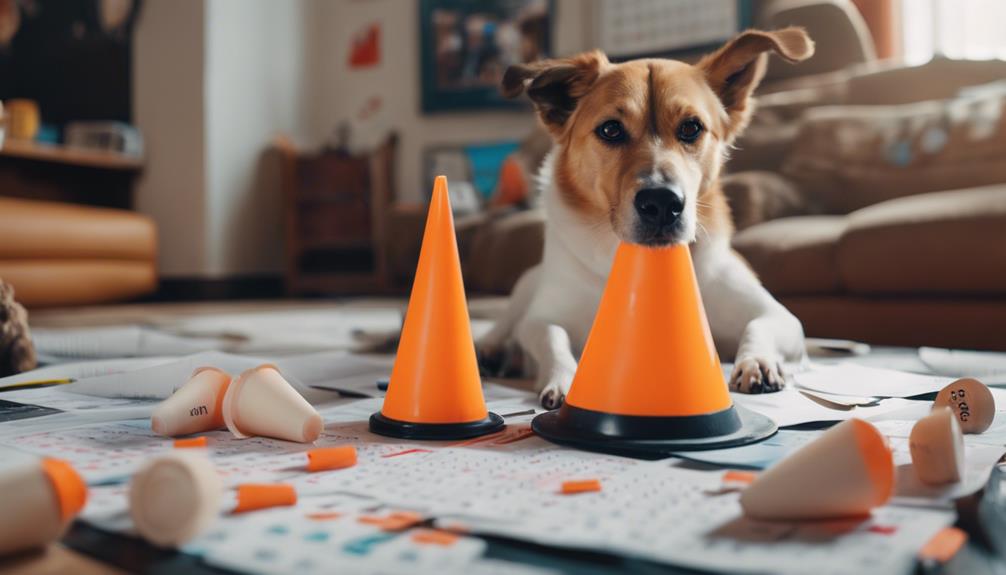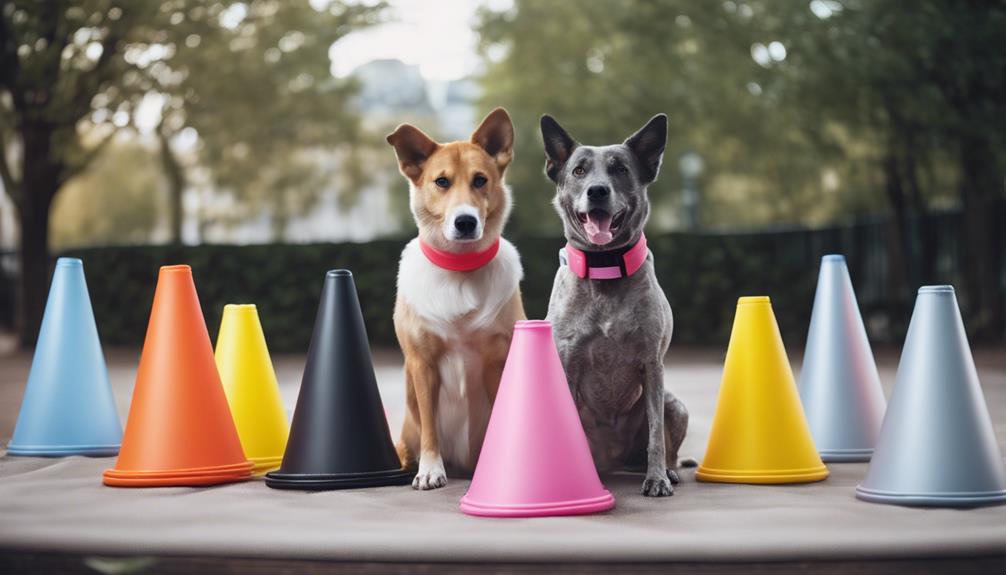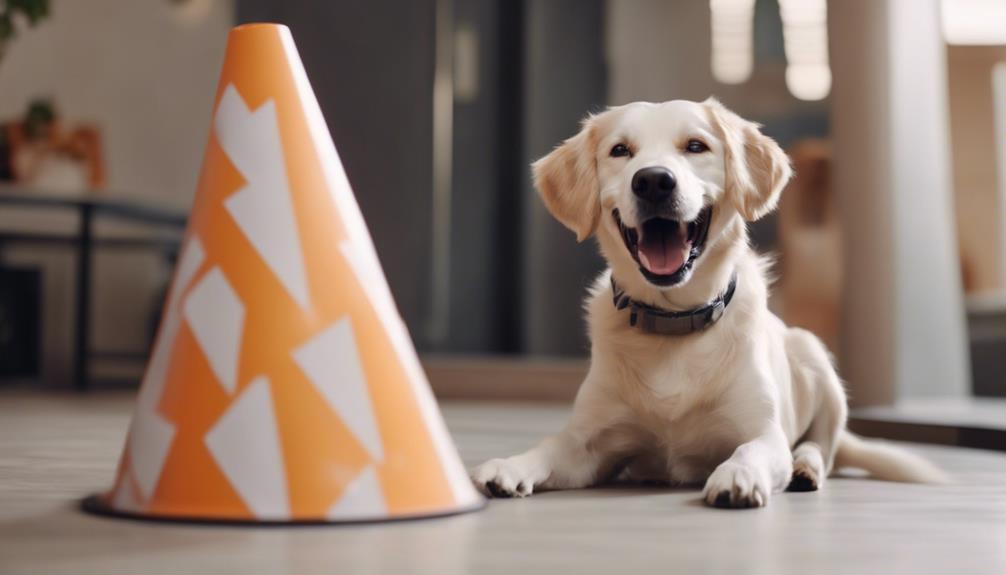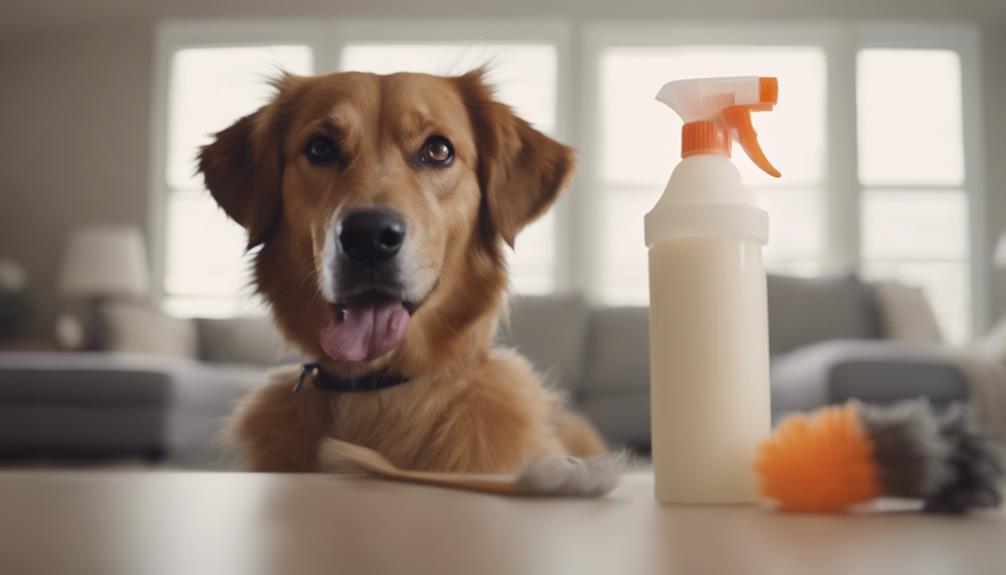Understanding the practicalities and challenges of having your dog wear a cone is crucial for pet owners. From the initial adjustment period to the long-term implications on your dog's well-being, there are several key factors to consider.
Beyond the physical aspects, the emotional and behavioral effects on your pet also merit attention. By delving into the intricacies of cone-wearing for dogs, one can gain valuable insights into managing this aspect of their pet's care effectively.
Key Takeaways
- Cones are crucial post-surgery to prevent licking or chewing.
- Dogs need 2-3 days to adjust to wearing a cone.
- Regular cleaning of the cone is necessary to avoid odors.
- Consider alternatives like inflatable collars for comfort.
Purpose of Dog Cones
Dog cones serve as essential tools in veterinary care by preventing animals from interfering with their incisions or wounds through chewing, scratching, or licking, ultimately aiding in the healing process. These cones act as a physical barrier, crucial in preventing complications such as stitch removal, infections, or delayed healing.
Whether post-surgery or to address excessive scratching, the use of dog cones is necessary to ensure proper recovery and well-being for the animal. By restricting access to the affected area, dog cones play a vital role in allowing wounds to heal undisturbed.
Proper usage of these cones is paramount in ensuring the successful recovery of our furry companions and reducing the risk of further medical issues.
Preparing for Cone Wearing
Preparation for the utilization of canine cones involves acclimating the animal to wearing the device comfortably and ensuring a positive association with its presence. Here are essential steps to prepare your dog for cone wearing:
- Dogs need about 2-3 days to adjust to wearing a cone.
- Offer treats to create a positive association with the cone.
- Be patient during the adjustment period.
- Prepare the space at home to prevent accidents or damage.
Duration and Maintenance of Cone Use

During the healing process, it is essential to maintain the cone on your pet for the recommended duration to ensure proper wound healing and prevent complications. Typically, dogs should wear the cone for about a week during the healing period. It is crucial that the cone remains on for the entire recommended duration, as advised by your veterinarian. Consult your vet before considering removing the cone prematurely to avoid any potential setbacks in the healing process.
Additionally, regular cleaning of the cone is necessary to prevent odors and maintain hygiene. By following these guidelines and ensuring the cone is properly maintained, you can help your dog recover comfortably and successfully.
Putting On and Securing the Cone
To properly secure the cone on your pet, begin by untying the strings holding the cone together. When putting on and securing the cone, follow these steps:
- Place the cone over the head ensuring the ears are inside.
- Adjust the cone to allow 2-3 fingers between the rim and neck.
- Ensure the cone is secure without causing discomfort.
- Follow specific steps to securely put the cone back on.
These steps are crucial to ensure that the cone effectively fulfills its purpose of preventing your dog from chewing, licking, or scratching at wounds or incisions. Properly securing the cone is essential for your pet's well-being during the healing process.
Alternatives to Plastic Dog Cones

When considering options beyond traditional plastic cones for your dog's post-surgery care, exploring alternative solutions can provide more comfort and flexibility in aiding their recovery.
Inflatable collars offer a softer and more comfortable option compared to rigid plastic cones. Neck collars are smaller and wrap around the neck, providing a less obstructive alternative. Soft fabric collars are gentler on the skin and less restrictive.
Surgical recovery suits cover the body and can be a suitable option for dogs sensitive around the neck area. Homemade alternatives such as using old t-shirts or pool noodles can also be effective in preventing your dog from accessing surgical sites while offering a more comfortable experience during the recovery period.
Adjusting to Cone Wearing
Acclimating to the wearing of a dog cone is essential for ensuring a smooth transition and effective post-surgery care. Adjusting to cone wearing can be challenging for dogs, but with the right approach, it can be made easier.
To help your furry friend get used to the cone, consider the following tips:
- Gradually introduce the cone to your dog in short intervals.
- Monitor your dog's behavior for signs of distress or discomfort.
- Ensure the cone fits properly and does not hinder your dog's movement.
- Offer rewards and positive reinforcement when your dog behaves calmly with the cone on.
Creating a Positive Association

As dogs acclimate to wearing a cone, fostering a positive association with this necessary accessory is fundamental for their comfort and well-being. To create a positive association, offer treats when introducing the cone to your dog. Associate the cone with rewards and praise to help them see it in a more positive light.
Additionally, consider using their favorite toys or engaging in activities they enjoy while they are wearing the cone. This will help distract them from the discomfort and make the experience more pleasant.
Space Preparation at Home
To ensure a smooth transition for your dog while wearing a cone, it is essential to prepare the designated space at home thoughtfully and strategically.
- Create a safe zone free of obstacles where your dog can move comfortably.
- Remove any sharp corners or fragile items that your dog could potentially bump into.
- Provide soft bedding or mats to ensure your dog's comfort while resting.
- Consider elevating food and water bowls to accommodate the cone.
Cleaning and Odor Control

Considering the importance of maintaining hygiene and comfort for your dog during the healing process, addressing cleaning and odor control of the cone is crucial.
To prevent unpleasant odors and ensure cleanliness, regular cleaning of the cone is essential. Use mild soap and water to clean the cone, making sure to rinse it thoroughly and allow it to air dry completely before reapplying it to your dog.
Additionally, you can sprinkle baking soda inside the cone to help eliminate any lingering odors. Keeping the cone clean and odor-free not only enhances your dog's comfort but also promotes faster healing and reduces the risk of infections.
Types of Cone Alternatives
Exploring alternative options to traditional plastic dog cones offers pet owners various choices to ensure their dogs' comfort and recovery post-surgery or during excessive scratching episodes. These alternatives include:
- Inflatable collars: softer and more comfortable than plastic cones.
- Neck collars: smaller and wrap around the neck for a snug fit.
- Soft fabric collars: gentler on the skin and less restrictive.
- Surgical recovery suits: cover the body and are ideal for neck-sensitive dogs.
Each alternative serves a specific purpose, providing pet owners with options tailored to their dog's needs for a more comfortable healing process.
Conclusion
In conclusion, understanding the purpose, preparation, duration, and maintenance of dog cones is crucial for ensuring the well-being and successful recovery of your furry companion.
Exploring alternative options to traditional plastic cones can provide a more comfortable experience for your pet.
By creating a positive association with the cone and preparing your home environment accordingly, you can facilitate a smoother healing process for your dog.
Optimal care and attention to detail are key in promoting your dog's overall health and happiness.




